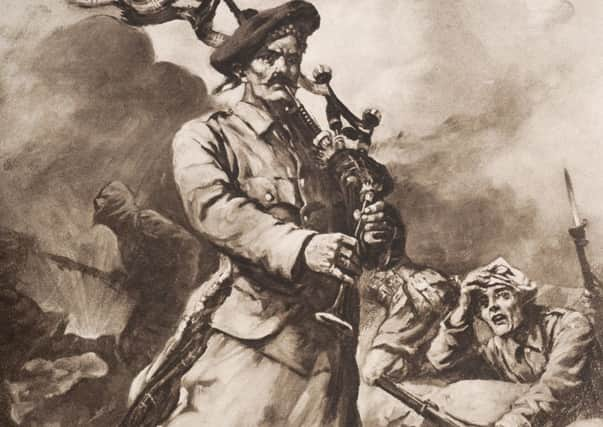Experts digitally recreate the sound of WWI battle


Though film footage survives, there is no original footage of what the battlefields of the Western Front sounded like.
But First World War historian Michael Stedman has worked with Glasgow School of Art’s Digital Design Studio to research the ear-splitting cacophony of a battle.
Advertisement
Hide AdAdvertisement
Hide AdAmid the sounds of weaponry such as exploding shells and bullets hitting metal, the strains of the pipers’ tunes can be heard, along with noises including tramping boots.
The “remarkable” results were played to descendants of pipers who played their comrades into battles such as Vimy Ridge and the Somme.
The project is part of a BBC Scotland documentary The Pipers of the Trenches, which commemorates the role that military bagpipers played in the Great War.
Neil McDonald, creative director of documentaries at BBC Scotland, said: “The story of the pipers who strode unarmed into battle is fascinating and inspiring – and one we wanted to tell in the fullest way possible.
“We drew on a wealth of military history to piece together their incredible acts of bravery for their descendants who feature in the programme and for the audience.
“However, one element of the story that was missing was an authentic sound as there is no known audio from the battles which, of course, were fought in the days before location recording was achievable.”
Mr Stedman has studied all the weaponry deployed at the Somme, when it was used and how it might have sounded.
He said: “There are no recordings in a mobile sense that I know of, as that really happened after the war. As a historian, I have often wondered what the battles would sound like.
Advertisement
Hide AdAdvertisement
Hide Ad“We could not reproduce the sound of the battles by copying modern weaponry.
“Modern artillery has a higher velocity which would not have an authentic sound from the time, so Paul had to do a lot of manipulation to generate a more accurate audio experience.
“One of the sounds was the explosion of a mine which contained 40,000lb of high explosives. The blast could be heard across the English Channel.”
More than 2,500 pipers served, and almost half were killed or wounded. They would rise unarmed from the trenches and, in defiance of machine guns and shells, stand straight and play their comrades into battle.
Considered a vital psychological tool by officers, the pipers were vulnerable to being targeted by the enemy.
Among the most famous from the First World War was Daniel Laidlaw, who was awarded the Victoria Cross for his bravery during the Battle of Loos in September, 1915.
The British advance had faltered after poison gas they released drifted back over their lines but, at the urging of an officer, Piper Laidlaw climbed on to the parapet of his trench and started playing. It was only then that the men went over the top.
Laidlaw played until he was shot in the legs, but the men managed to capture Loos that day and advanced further.
Advertisement
Hide AdAdvertisement
Hide AdThe documentary follows Glasgow drama teacher Richie McColm and Dr Stuart Allan of National Museums Scotland to one of the battle sites in western Turkey to uncover the story of the former’s great-grandfather, piper Kenneth McLennan.
Mr Allan revealed that Mr McColm’s ancestor, a piper in the Highland Light Infantry, was awarded a Distinguished Conduct Medal for his role in the battle.
Pipers Of The Trenches is part of the BBC’s First World War centenary and will be shown on BBC2 at 9pm on Monday.